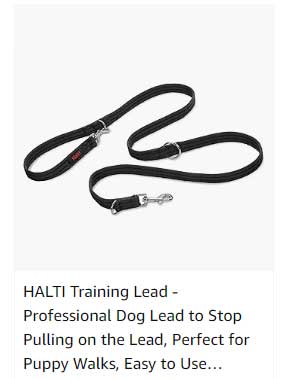It’s important to comprehend why using anti-pulling devices such as choke chains, prong collars, and no-pull harnesses can be detrimental to your dog’s well-being.
ANTI PULLING TOOLS AND DEVICES
While these tools might seem effective in stopping dogs from pulling, they can inadvertently engender fear, anxiety, and even pain in our beloved canine companions.
Dogs pull for many reasons – curiosity, excitement, anxiety, or simply because they have been conditioned to do so.
It’s a natural instinct for them to explore their surroundings and it’s our responsibility as owners to guide them compassionately.
Using devices like prong collars or choke chains to correct pulling, impels the dog to react out of fear or pain rather than understanding or respect.
This can escalate to more serious behavioral issues such as aggression or anxiety disorders.
PAIN
Prong collars, in particular, are designed to pinch a dog’s neck whenever they pull on the leash.
Despite their touted efficacy in deterring pulling, they can cause physical harm to your dog, including injuries to their trachea and esophagus, and in extreme cases, spinal damages.
Besides, when dogs associate this pain with their attempts to explore or interact with their environment, it can lead to adverse psychological effects and unpredictable behavioral responses.
The case is similar with devices like choke chains and no-pull harnesses.
Though they might not pose the same physical threats as prong collars, they can still cause considerable discomfort and contribute to a negative association with leash walking.
Over time, this can result in a reluctant, anxious dog that is fearful of going on walks, and in some cases, may even lead to redirected aggression towards other dogs or humans.
TRAINING IS BETTER
In lieu of resorting to anti-pulling devices, it’s more beneficial to train your dog using positive reinforcement techniques.
Rewarding your dog for not pulling, teaching them to pay attention to you, and using a conventional harness that doesn’t cause discomfort or pain, are some of the effective strategies you can implement.
Patience and consistency are key when it comes to training a dog to walk politely on a leash, but the end result is a happy, confident dog that views walks as a positive experience.
CONCLUSION
At the end of the day, the way we treat our dogs is a testament to our understanding of their needs, behaviors, and feelings.
It’s essential to remember that our dogs aren’t pulling just to annoy us – they are simply expressing their excitement, curiosity, or sometimes, fear or discomfort.
Rather than using pain or fear to correct these behaviors, let’s strive to understand and guide them lovingly.
After all, dogs are man’s best friend, and they deserve to be treated with kindness and respect.












